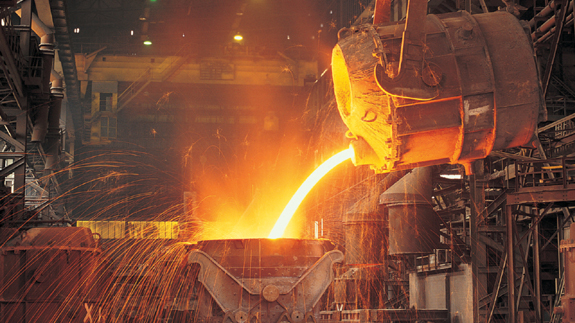CAIRO - 1 October 2020: The world’s population stands at 7.8 billion, with developing countries home to the largest population sizes. Egypt ranks 14th, which makes reducing and preventing unemployment a challenge. As the world of today adopts core capital-intensive technologies offering efficiency and speed, labor-intensive ones are needed not just to fulfill demand but also to create jobs and inhibit poverty.
How capital-intensive and labor-intensive are defined
Economist and Professor of Planning and Public Affairs at the Humphrey School of Public Affairs Ragui Assaad explains to Business Today Egypt that the difference between capital intensive and labor-intensive industries is the amount of capital used per worker. “Capital intensity is determined by the type of industry. For instance, chemical industries are capital intensive while garment industries are labor intensive. Also, the technology used determines if the industry is labor intensive or capital intensive,” Assaad explains.

For the service sector, Chairman of the Egyptian Forum for Economic Studies and Professor of Economics, Investment, and International Finance Rashad Abdo tells Business Today Egypt that the service sector is always capital-intensive, giving the examples of delivery services and resorts. When it comes to the former, one delivery person works in a specific neighborhood/district. For the latter, around 40-50 workers are hired in an establishment that is worth hundreds of millions of pounds. Moreover, the ratio weighs more on capital.
Viability to the Economy
Assistant Professor at the Faculty of Political Science and Economics at Beni Suef University Mohamed Rashed says that labor-intensive industries are more viable to the national economy as they create job opportunities and reduce unemployment rates. However, some industries – which can be crucial in the economy and meet demand - are capital-intensive by nature. It is normal to have a mix of both types in the economy. “Yet, it is important to take into consideration that capital-intensive industries do not expand at the expense of labor intensive ones,” Rashed further highlights.

Labor-intensive industries are beneficial for developing countries as workers pay income tax, and spend in the economy. Capital-intensive are useful in developed countries given lacking labor, Rashed underlines.
Speaking of Egypt, Rashed explains that investors abstain from investing in labor-intensive because of the shortage in “employable” workers, and legal restrictions inhibiting the possibility of hiring a precise percentage of qualified foreign workers, and cancelling out the ability to carry out lay-offs when the business is stumbling. Also, the rise in minimum wage undermines competitiveness in local and international markets.
Viability to the Investor
Speaking of a main factor shaping the investor’s decision concerning which type to venture into, Assaad says, “Viability to investors is determined by the cost of capital. Since interest rates in Egypt are high, capital is expensive while labor is quite cheap. That’s a competitive advantage to Egypt, which is rich in labor.”
Nevertheless, the reality is different. “We still hold on to the history of energy subsidies so investors go for energy intensive industries, which are by default capital intensive industries. Also, distortions are created when subsidizing imported goods, which can possibly push investments towards capital goods…We need a healthy policy environment,” Assaad highlights.
“We have non-market forces, like energy subsidies, shaping investors’ decisions. The market will correct itself by eliminating subsidies, encouraging exports, and eliminating obstacles.”
Rashed clarifies that capital-intensive in 40-50 workers are hired in an establishment that is worth hundreds of millions of pounds. Moreover, the ratio weighs more on capital.
Viability to the Economy
Assistant Professor at the Faculty of Political Science and Economics at Beni Suef University Mohamed Rashed points says that labor-intensive industries are more viable to the national economy as they create job opportunities and reduce unemployment rates. However, some industries – which can be crucial in the economy and meet demand - are capital-intensive by nature. It is normal to have a mix of both types in the economy. “Yet, it is important to take into consideration that capital-intensive industries do not expand at the expense of labor intensive ones,” Rashed further highlights.
Labor-intensive industries are beneficial for developing countries as workers pay income tax, and spend in the economy. Capital-intensive are useful in developed countries given lacking labor, Rashed underlines.
Speaking of Egypt, Rashed explains that investors abstain from investing in labor-intensive because of the shortage in “employable” workers, and legal restrictions inhibiting the possibility of hiring a precise percentage of qualified foreign workers, and cancelling out the ability to carry out lay-offs when the business is stumbling. Also, the rise in minimum wage undermines competitiveness in local and international markets.
Viability to the Investor
Speaking of a main factor shaping the inves - tor’s decision concerning which type to venture into, Assaad says, “Viability to investors is determined by the cost of capital. Since interest rates in Egypt are high, capital is expensive while labor is quite cheap. That’s a competitive advantage to Egypt, which is rich in labor.”
Nevertheless, the reality is different. “We still hold on to the history of energy subsidies so investors go for energy intensive industries, which are by default capital intensive industries. Also, distortions are created when subsidizing imported goods, which can possibly push investments towards capital goods…We need a healthy policy environment,” Assaad highlights.
“We have non-market forces, like energy subsidies, shaping investors’ decisions. The market will correct itself by eliminating subsidies, encouraging exports, and eliminating obstacles.”
Rashed clarifies that capital-intensive industries are mostly viable to investors than labor-intensive industries, which sustain not just salaries but also health insurance, social insurance, compensations, training, and other problems caused by human resources.
Risk
Rashed clarifies that the risk is pertinent to the cost and revenue of the type of production used, and the availability of such type. For in - stance, the shortage in employable labor and restrictions on hiring qualified foreign labor pushes investors into capital-intensive labor, the professor adds.
Explaining which type is more of a high risk, Abdo says labor-intensive is more high risk, given the many excuses put forward by work - ers to work less, the wrong application of tech - nologies, and lack of supervision or turning a blind eye to mistakes. On the other hand, when it comes to capital-intensive, it is just a model that gets replicated.
Since investors abstain from labor-intensive industries out of fear of inability to handle workers, saying they are hard to deal with. Assaad comments, “Investors have to learn to manage labor the same as they learn how to manage other aspects of the business.”
That is why a work system, a firm management, and continuous training are crucial for any business to succeed,” Abdo asserts, regarding the same point.
Abdo suggests that businesspeople can establish vocational training centers to produce workers who are employable and qualified to work at their factories. If they fear that those trainees would leave before employers reap the fruits of what they have sown, they could beforehand get guarantees.
Abdo underlines that two businesses can generate the same amount of revenues. How - ever, the number of workers at each can be hugely different. That is why the decision to invest in labor-intensive industries highly de - pends on the investor’s desire to serve their country.
Status Quo
Rashed highlights that labor-intensive industries are more dominant in the Egyptian economy and must be further supported by se - curing employable labor. This can be achieved by establishing training centers offering qualifications needed in the market as well as flexible laws preserving the rights of both the employer and the employee, driving the investor to expand in labor-intensive industries.
Comments
Leave a Comment